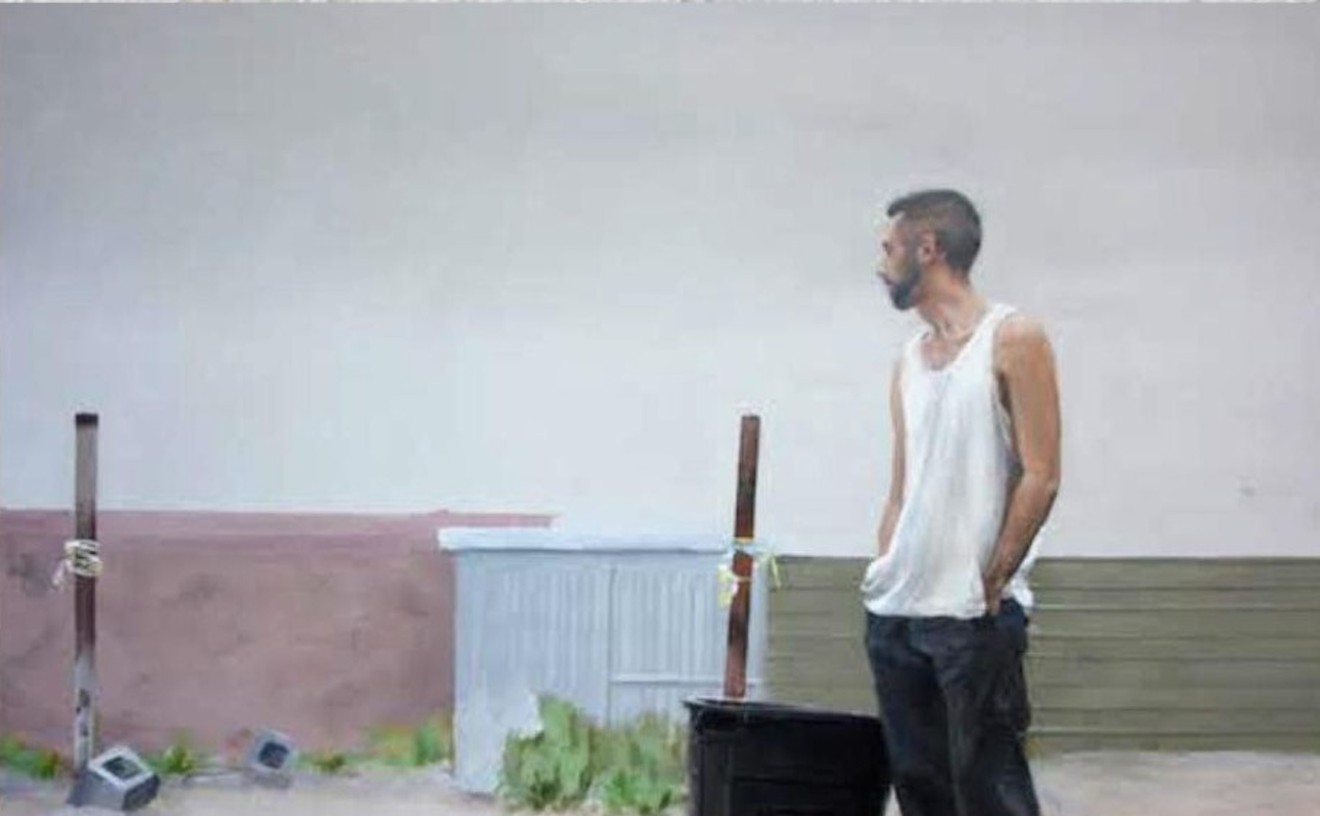And the Phoenix Art Museum knows it. It has organized a major survey of contemporary art made in the reunified Berlin, the art spot of the moment.
With a title like "Constructing New Berlin," I expected the art to deal with the city as a subject matter. To my surprise, the show went in a totally different direction.
Walking in, there are large-scale photos of the East Berlin construction zone by Frank Thiel. Brightly painted cranes and towering metal structures reveal the geometry of industry. A sense of massive change and incredible financial investment introduces the show. This is the type of work I was expecting to see -- offering a portrait of Berlin and what makes it "new."
While all the artists have studied or worked in Berlin, the art chosen for the show isn't confined to the city limits. It took a while for me to get over this -- to realize that the show just gives an idea of the concepts being explored in Berlin.
Complementing Thiel are Ali Kepenek's poster-size photos, which cover one side of the gallery from floor to ceiling. Like snapshots on the walls of a dorm room, they are affixed with colored masking tape. These photos offer the seedy side of Berlin, Nan Goldin-style. A young man is pictured with a spaced-out expression, water dribbling out of his mouth. Women with pounds of makeup flash their boobies in a dank hallway. This is the drunken club scene, the transsexual prostitutes, the bare-breasted fringe of society. It's a glimpse into a specific Berlin lifestyle -- a cursory perspective to the show's theme.
From here on, the exhibition throws a curve ball. Most of the art has little or nothing to do with Berlin, except that all the artists are based there. I found that the trick is to concentrate on the works, with the theme as an interesting side note.
Monica Bonvicini, who was born in Italy, has spray-painted the words "Add Elegance to Your Poverty" and the outline of a picket fence onto the museum wall. The title is a slogan from a commercial gate and fence company. With a simple tagged wall, Bonvicini shows a concern for manmade structures found in urban areas.
And what's the connection to Berlin?
Berlin has experienced an explosion of building since the 1990s, with some of the world's top architects leading the way. In a city like Berlin where the political delineation between democracy and communism can still be seen in surviving buildings, I can understand how Bonvicini's concern with architecture would ignite a work like this.
Across the gallery, a video installation by Reynold Reynolds, an American, is broadcasting images of Istanbul. This two-panel, double projection of recorded images with a booming sound system rocks the entire gallery space and creates an enthralling portrait of that city; images of the Blue Mosque are accompanied by the dreamlike Anatolia singing only to be interrupted by an explosion of the screaming city streets.
On a personal level, I loved this because I've been to Istanbul and the installation really brought me back. But I had to do a little stretching to make a connection to Berlin. All of Germany's larger cities have a high population of Turkish immigrants -- it's not a feature that's unique to Berlin. What the work does show is that Berlin artists are thinking about the nation's ongoing concern with immigration -- something we can surely relate to.
Then there are the photographs by German-born Thomas Demand. The works are inspired by a disturbing murder story that occurred in a small German town, which received incredible media attention throughout the country. The artist chooses a most curious way of approaching the surrounding hype, and makes a biting criticism of the artificiality of media images. Demand obviously heard about this incident that permeated the country -- he gives an idea of what a major story this was by making it his art's focus. Again, not much to do with Berlin, but definitely worth checking out.
This was a good show -- filled with works that are interesting and challenging. But still, I walked away confused and disappointed. At first, it seemed, the curator really stretched the theme. Later, I changed my mind. True, this show does not provide a history lesson or a tutorial about Berlin the city (even if you take advantage of the supplemental materials, which I highly recommend). In the end, this is just a contemporary art exhibition -- one that is showing, not telling, what Berlin artists are up to these days.
And that alone will easily fill your afternoon.










